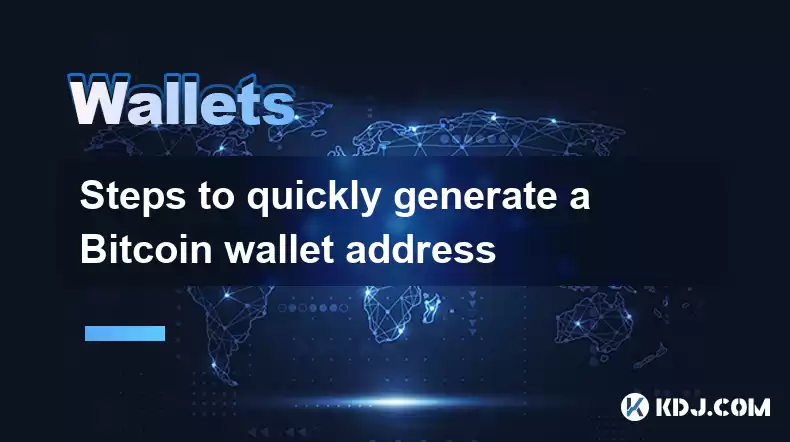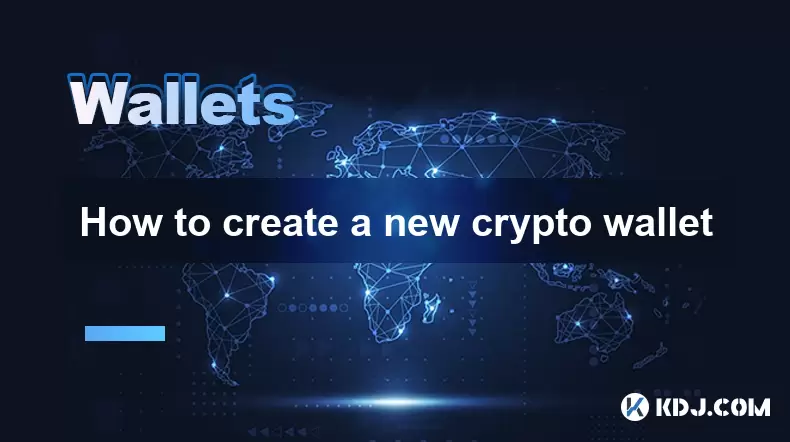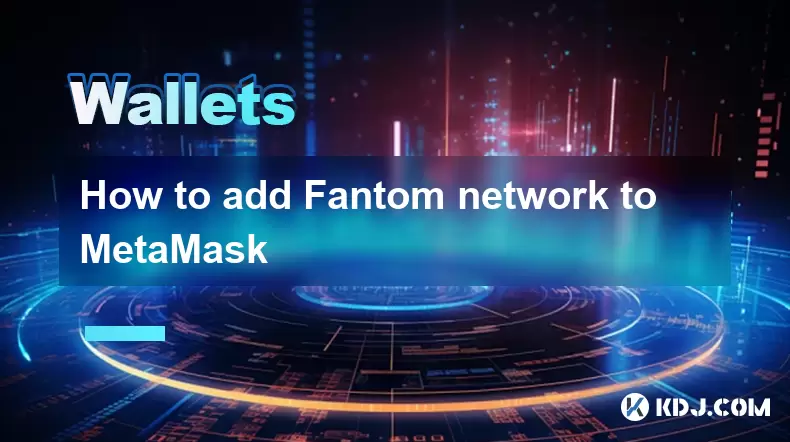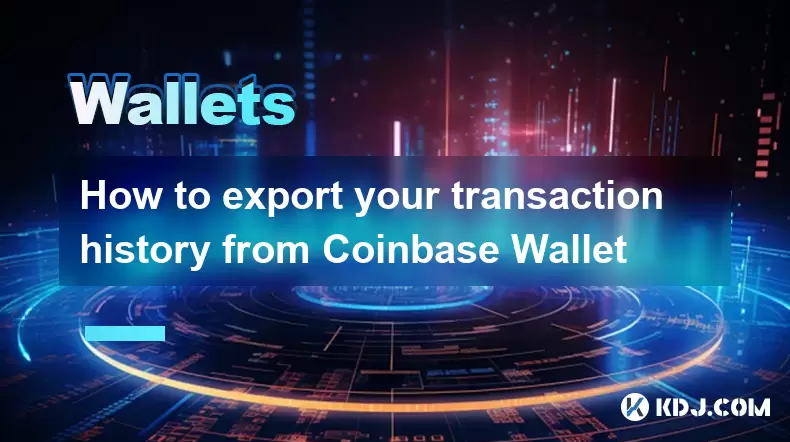-
 Bitcoin
Bitcoin $117500
2.15% -
 Ethereum
Ethereum $3911
6.19% -
 XRP
XRP $3.316
10.79% -
 Tether USDt
Tether USDt $1.000
0.01% -
 BNB
BNB $787.2
2.24% -
 Solana
Solana $175.2
4.15% -
 USDC
USDC $0.9999
0.00% -
 Dogecoin
Dogecoin $0.2225
8.40% -
 TRON
TRON $0.3383
0.28% -
 Cardano
Cardano $0.7868
6.02% -
 Stellar
Stellar $0.4382
9.34% -
 Hyperliquid
Hyperliquid $40.92
7.56% -
 Sui
Sui $3.764
7.63% -
 Chainlink
Chainlink $18.48
10.66% -
 Bitcoin Cash
Bitcoin Cash $582.1
1.88% -
 Hedera
Hedera $0.2601
6.30% -
 Avalanche
Avalanche $23.33
4.94% -
 Ethena USDe
Ethena USDe $1.001
0.02% -
 Litecoin
Litecoin $122.3
2.04% -
 UNUS SED LEO
UNUS SED LEO $8.969
-0.27% -
 Toncoin
Toncoin $3.339
0.86% -
 Shiba Inu
Shiba Inu $0.00001287
4.30% -
 Uniswap
Uniswap $10.43
7.38% -
 Polkadot
Polkadot $3.861
5.08% -
 Dai
Dai $1.000
0.02% -
 Bitget Token
Bitget Token $4.513
3.41% -
 Monero
Monero $267.7
-6.18% -
 Cronos
Cronos $0.1499
4.14% -
 Pepe
Pepe $0.00001110
5.15% -
 Aave
Aave $284.9
8.28%
Steps to quickly generate a Bitcoin wallet address
Bitcoin wallet addresses are unique identifiers used to send and receive Bitcoins securely, generated easily via software, online tools, or hardware wallets.
Apr 05, 2025 at 01:35 am

Understanding Bitcoin Wallet Addresses
Before diving into the steps, it's crucial to understand what a Bitcoin wallet address is. It's essentially a unique identifier, like a bank account number, used to receive and send Bitcoins. You don't need to reveal your personal information to generate or use one; your address keeps your identity private. Generating a new address is simple and can be done in minutes using various methods. This address is a string of alphanumeric characters, and its security is paramount.
Method 1: Using a Bitcoin Wallet Software
This is the most common and recommended method. Numerous wallets offer user-friendly interfaces. Choosing a reputable wallet is crucial to ensure security and reliability. Popular options include Electrum, Exodus, and BlueWallet. These wallets handle the address generation process for you, ensuring its validity and security. The process typically involves downloading, installing, and setting up the wallet software.
- Download and install a Bitcoin wallet from a trusted source.
- Create a new wallet, following the on-screen instructions. This usually involves creating a strong password.
- Your wallet will then generate a new Bitcoin address. You'll find this address displayed within the wallet interface. It's usually displayed as a QR code for easy scanning.
- Always back up your wallet's seed phrase. This is crucial for recovering your Bitcoin if you lose access to your wallet.
Method 2: Using Online Bitcoin Wallet Generators
While convenient, online generators pose a higher security risk. Use only reputable websites with positive user reviews and strong security measures. Never use a generator you don't trust. The security of your Bitcoin depends on the security of the website you use.
- Find a reputable online Bitcoin wallet generator.
- Follow the instructions on the website to generate a new address. This often involves clicking a button or filling out a form.
- The generator will provide you with a Bitcoin address. Remember to copy this address carefully, as you won't be able to retrieve it later from the generator if you lose it.
- Use this address only once, if possible, to enhance your security.
Method 3: Using Hardware Wallets
Hardware wallets provide the highest level of security. These are physical devices that store your private keys offline, protecting them from online threats like hacking and malware. Ledger and Trezor are two popular hardware wallet brands.
- Purchase a hardware wallet from a trusted vendor.
- Follow the manufacturer's instructions to set up your wallet and generate a new Bitcoin address. This usually involves connecting the device to your computer.
- Your hardware wallet will display your Bitcoin address. Always treat your hardware wallet and its seed phrase with extreme caution. Never share these with anyone.
Understanding Private Keys and Seed Phrases
Your Bitcoin wallet doesn't just hold your address; it also holds your private keys and seed phrase. The private key is a secret code that gives you control over your Bitcoin. The seed phrase is a list of words that can be used to recover your private keys if you lose access to your wallet. Never share your private keys or seed phrase with anyone. Losing them means losing your Bitcoin.
Choosing the Right Method
The best method depends on your security needs and technical skills. For most users, using reputable wallet software is the easiest and safest option. Hardware wallets offer the highest security but require a higher initial investment. Online generators should be used with extreme caution due to security risks.
Frequently Asked Questions
Q: Is it safe to use online Bitcoin wallet generators?
A: While convenient, online generators carry significant security risks. Your private keys could be compromised if the generator is not secure. It's generally safer to use dedicated wallet software or hardware wallets.
Q: How many Bitcoin addresses can I generate?
A: You can generate as many Bitcoin addresses as you need. Most wallets allow you to generate new addresses easily. Using a fresh address for each transaction enhances your privacy and security.
Q: What happens if I lose my Bitcoin address?
A: If you lose your Bitcoin address but have your private keys or seed phrase, you can still access your Bitcoin. However, if you lose both your address and your private keys/seed phrase, your Bitcoin is irretrievably lost.
Q: Are all Bitcoin addresses the same length?
A: Yes, Bitcoin addresses are typically around 34 characters long and consist of alphanumeric characters (letters and numbers). Variations in length are very uncommon and should be treated with suspicion.
Q: Can I reuse a Bitcoin address?
A: While you technically can reuse a Bitcoin address, it's generally not recommended for privacy reasons. Reusing an address makes it easier to link your transactions and potentially compromise your anonymity. It's best practice to use a fresh address for each transaction.
Q: What is a seed phrase and why is it important?
A: A seed phrase is a list of words that acts as a backup for your Bitcoin wallet. If you lose access to your wallet, your seed phrase allows you to recover your private keys and access your Bitcoin. Keep your seed phrase safe and secure; it is the key to your Bitcoin.
Q: How do I choose a secure Bitcoin wallet?
A: Look for wallets with strong reputations, open-source code (allowing community scrutiny), and positive user reviews. Consider factors like security features, ease of use, and platform compatibility when making your choice. Hardware wallets generally offer the highest level of security.
Disclaimer:info@kdj.com
The information provided is not trading advice. kdj.com does not assume any responsibility for any investments made based on the information provided in this article. Cryptocurrencies are highly volatile and it is highly recommended that you invest with caution after thorough research!
If you believe that the content used on this website infringes your copyright, please contact us immediately (info@kdj.com) and we will delete it promptly.
- Ethereum, Staking Yields, and DeFi Exposure: A New Era for Investors?
- 2025-08-08 15:10:12
- Unilabs Pumps MIA, Binance Coin Bouncing Back, and Ethereum's Bearish Blues
- 2025-08-08 15:10:12
- Ethereum's Wyckoff Markup and Market Rotation: A New Era?
- 2025-08-08 15:30:12
- Ethereum, Vitalik Buterin, and the Overleveraged Game: A Balancing Act
- 2025-08-08 15:30:12
- Ethereum, Corporate Treasuries, and Vitalik Buterin: A New Era for ETH?
- 2025-08-08 15:36:08
- BNB Price, Binance Staking, and SEC Concerns: What's the Deal?
- 2025-08-08 15:36:08
Related knowledge

How to reset your MetaMask password
Aug 08,2025 at 01:28pm
Understanding the MetaMask Password Reset ProcessMany users confuse the MetaMask password with the seed phrase or private key, but they serve differen...

How to buy Dogecoin on MetaMask
Aug 08,2025 at 03:42am
Understanding Dogecoin and MetaMask CompatibilityDogecoin (DOGE) is a popular meme-based cryptocurrency that operates on its own blockchain, originall...

How to create a new crypto wallet
Aug 07,2025 at 09:22pm
Understanding the Basics of a Cryptocurrency WalletA cryptocurrency wallet is a digital tool that allows users to store, send, and receive digital ass...

How to add Fantom network to MetaMask
Aug 07,2025 at 08:21am
Understanding the Fantom Network and MetaMask IntegrationThe Fantom network is a high-performance, scalable, and secure blockchain platform designed f...

How to update the firmware on your Trezor wallet
Aug 07,2025 at 05:00pm
Understanding the Role of Staking in Cryptocurrency EcosystemsStaking has become a fundamental component of many blockchain networks that operate unde...

How to export your transaction history from Coinbase Wallet
Aug 07,2025 at 06:50am
Understanding Coinbase Wallet and Transaction HistoryCoinbase Wallet is a self-custodial cryptocurrency wallet that allows users to store, manage, and...

How to reset your MetaMask password
Aug 08,2025 at 01:28pm
Understanding the MetaMask Password Reset ProcessMany users confuse the MetaMask password with the seed phrase or private key, but they serve differen...

How to buy Dogecoin on MetaMask
Aug 08,2025 at 03:42am
Understanding Dogecoin and MetaMask CompatibilityDogecoin (DOGE) is a popular meme-based cryptocurrency that operates on its own blockchain, originall...

How to create a new crypto wallet
Aug 07,2025 at 09:22pm
Understanding the Basics of a Cryptocurrency WalletA cryptocurrency wallet is a digital tool that allows users to store, send, and receive digital ass...

How to add Fantom network to MetaMask
Aug 07,2025 at 08:21am
Understanding the Fantom Network and MetaMask IntegrationThe Fantom network is a high-performance, scalable, and secure blockchain platform designed f...

How to update the firmware on your Trezor wallet
Aug 07,2025 at 05:00pm
Understanding the Role of Staking in Cryptocurrency EcosystemsStaking has become a fundamental component of many blockchain networks that operate unde...

How to export your transaction history from Coinbase Wallet
Aug 07,2025 at 06:50am
Understanding Coinbase Wallet and Transaction HistoryCoinbase Wallet is a self-custodial cryptocurrency wallet that allows users to store, manage, and...
See all articles

























































































